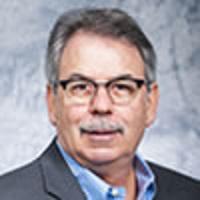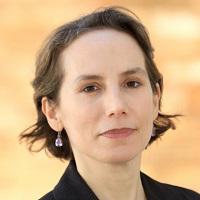
Matt Zbrog
Money laundering investigations have busted kingpins of international criminal organizations, prevented terrorists from carrying out attacks, exposed double agent spies, and even contributed to the resignation of a United States president.
Broadly defined, money laundering is the act of disguising the proceeds of illicit activities. And although money laundering has evolved from that initial mandate, it is usually still composed of three main phases: placement (introducing illegal money to the legitimate financial system), layering (tumbling that cash through transactions intended to obscure its source), and integration (where the cash begins to acquire “legitimate” wealth). That process can take many forms and variations, but the criminalization of money laundering is, simply put, an effort to take the profit out of crime.
Laws against money laundering first appeared in the U.S. in the 1930s, during the Prohibition era, when illicit money from the sale of black market alcohol flowed in and out of legitimate financial institutions. Proving the existence of illegal funds could, in some instances, be easier than proving the existence of illegal activity. With that revelation, and with the introduction of new anti-money laundering laws, government officials had a new avenue to prosecute criminal offenders: by following the money.
The 1980s saw money laundering laws evolve into use in the war on drugs as a means to lower the burden of proof on convicting drug traffickers. During this era, an international view of money laundering began to take shape, where top offenders would often reside in countries less regulated and policed outside of North America. However, those offenders still operated largely in dollars, and therefore law enforcement once again had a separate axis on which to attack criminal enterprises.
The September 11 attacks brought about the war on terror and a new and modern understanding of money laundering: this was a crime that was no longer concerned only about disguising the source of an income, but also the destination. Cutting supply lines to suspected terrorist organizations was a critical first step in the war on terror, and as both individualized and country-specific sanctions have become an increasingly important form of geopolitical pressure, complex anti-money laundering methods have grown in tandem to cover a territory that is much wider than ever before.
Subcategories of money laundering can include tax evasion and other types of white collar crime, but the most important trend in money laundering today is threat financing. Many of the most recent financial crime laws across the world—including the Patriot Act in the U.S., policies in Australia, New Zealand, and Hong Kong, and frameworks set by the International Monetary Fund (IMF)—openly equate money laundering with terrorist financing and sanction busting.
Criminals need accomplices to launder money, and those accomplices are often in various states of awareness as to their complicity. In the case of France’s largest bank, BNP Paribas—which was fined a record $8.9 billion for actively obscuring its involvement in laundering money for sanctioned nations of Sudan, Iran, and Cuba—the illegal financial actions were condoned by the highest level of executives.
A lengthy investigation by American authorities found that bank executives altered information to obscure the source and destination of Sudanese clients. They laundered money to and from a genocidal regime that had harbored Osama Bin Laden. Still, no executives were individually charged by U.S. law enforcement, but strict penalties beyond the $8.9 billion were put into effect. BNP Paribas was barred from processing dollar transactions for a year, significantly hampering its ability to operate and interact with the wider financial system, and in effect handcuffing the bank.
Forensics professionals gather evidence about money laundering by following the trail of illicit capital, sometimes before it is even recognized to be illicit. Due to their familiarity with how money is moved, they can detect weaknesses in financial institutions as well as spot red flags in transactions that a typical financial professional might wave through. The complex web of international transactions and schemes that comprise modern money laundering requires dedicated forensic professionals who can unravel that tangled web and identify conspirators as well as prevent future avenues of impropriety. Forensics professionals need to continuously adapt their methodology to match the evolving nature of money laundering.
Forensics professionals attack money laundering on two primary vectors: prevention and detection. On the prevention end of the spectrum, it is not as simple as introducing the standard prevention methods such as strict know your customer (KYC) requirements, which can come with negative side effects that affect financial institutions in the developing world as well as charities operating in conflict zones. A survey found that two-thirds of charities had experienced funding problems as a result of such KYC requirements. Introducing proper preventative safeguards to financing requires not a butcher’s knife but a scalpel, as well as a skilled hand to apply it to a variety of nuanced contexts.
On the detection side, money laundering is more complex than it has ever been. The classic methods of money laundering (e.g., cash-intensive businesses, structuring of deposits, cash smuggling) have given way to real estate schemes, tax amnesties, shell companies, and even bank capture (i.e., where a criminal enterprise buys a controlling interest in a legitimate bank for illicit purposes).
What’s more, new frontiers in online gaming and cryptocurrency are changing the map and scope of money laundering. Known as the cyber age of money laundering, this era has ushered in digital currency alternatives to traditional laundering. In the words of an ex-IRS crime chief: “If Al Capone were alive today, this is how he would be hiding his money.”
While it is impossible to definitively know the reach of an enterprise like money laundering that is by nature concealed, the IMF estimates that 2 to 5 percent of the global economy involves laundered money. Even while recognizing the limitations of available data sets, the U.S. Treasury projected in 2015 that $300 billion is generated annually in illicit proceeds. The UN Office of Drugs and Crime puts the number closer to $2 trillion. The general consensus is that the scale of money laundering is both global and massive.
As those ill-gotten gains attempt to enter the legitimate financial system, it is up to forensic professionals to block its entry, stymie its movement, track down its perpetrators, and pull up the drawbridge behind them.

Suzanne Lynch is a professor of economic crime at Utica College, where she has served as both the director of the financial crime and compliance management program and the assistant executive director of the Economic Crime Institute.
Having held fraud management positions at MasterCard, Goldman Sachs, and Comerica Bank, her experience with financial investigations is global. At Utica College, Ms. Lynch has helped redesign the school’s online certificate program to enhance its relevance in the investigation of financial crime, bringing in key stakeholders such as the Association of Certified Anti Money Laundering Specialists (ACAMS). Outside of academia, she continues to consult for companies regarding fraud and money laundering detection strategies for electronic payments, and she has given training on prevention, detection, and investigation of financial crime for law enforcement groups and financial institutions around the world. Professor Lynch received her bachelor’s in criminal justice from Wayne State University and her master’s in economic crime management from Utica College.

Kerry Myers is a clinical professor of forensic accounting and law at the University of South Florida’s Lynn Pippenger School of Accountancy. He teaches graduate classes in forensic accounting, white collar crime, money laundering, and financial investigation.
Prior to joining academia, Professor Myers spent more than 20 years as an attorney and accountant with the Federal Bureau of Investigation (FBI), where he worked on several forensic investigations, one of which involved the investigation, prosecution, conviction, and dismantlement of a terrorist cell operating in the U.S. As part of the Florida Center for Cybersecurity, he has given several presentations on the intersection of cybersecurity and money laundering. Professor Myers has a bachelor’s in business administration and accounting from the Central Missouri State University and a Juris Doctor from the University of Missouri.

Dr. Moyara Ruehsen runs the Financial Crime Management program at Middlebury Institute of International Studies, where she has taught courses in anti-money laundering, threat financing, cyber-enabled crime, and trade-based financial crime since 1994. She is a Certified Anti-Money Laundering Specialist (CAMS).
Dr. Ruehsen led the charge in rethinking money laundering in the context of terrorist financing, with several publications to show for it. She consults for the U.S. government and the private sector, and has lectured and provided training in Kuwait, Iraq, Iran, Palestine, and the U.A.E. Additionally, Dr. Ruehsen has served on both the editorial advisory board of Money Laundering Alert and as part of the Middle East task force of the Association of Certified Anti-Money Laundering Specialists (ACAMS). She has a bachelor’s degree in social sciences, a master’s in Middle Eastern studies, and a doctorate in international economics and Middle Eastern studies—all from Johns Hopkins University.
Those interested in pursuing a career in detecting money laundering and catching criminals and terrorists can enroll in a variety of programs. Below are a few options.
USF’s certificate program is geared toward students seeking a career in risk assessment, compliance, and anti-money laundering. Either an undergraduate or graduate degree in business is a prerequisite for acceptance into the program. Students take classes in risk management and legal compliance, forensic accounting and legal issues, statistical data mining, and accounting system audit, control, and security.
Completion of the program prepares graduates to take the exam required for the Certified Anti-Money Laundering Specialist (CAMS) certification and offers a discounted rate for those who do so. The 12-credit, four-course program costs approximately $482 per credit and may be completed on-campus or online.
University of North Carolina, Charlotte
The certificate in forensic accounting offered by UNCC teaches students how to detect, deter, and investigate fraud, money laundering, and terrorist financing. The program is geared not only to mid-career forensic accounting professionals, but also toward attorneys, law enforcement, and other cross-disciplinary fields that have touchpoints with financial crime. Students take classes in the principles of forensic accounting, fraud detection and prevention, and computer forensics. The three-course program costs approximately $3,812 in total and may be completed entirely online.
Established in 1999 in cooperation with the Economic Crime and Cybersecurity Institute, the executive master of science in financial crime and compliance management at Utica College remains the only graduate program of its kind in the U.S. and the first to ever partner with the Association of Certified Anti-Money Laundering Specialists (ACAMS).
Designed for professionals in economic crime, the program equips graduates for careers in financial investigation and anti-money laundering with a global perspective. Students learn how to detect financial crimes, how to investigate them, how to prepare an investigative case report, and how to assess and respond to economic threats. The program consists of 36 credits, costs approximately $880 per credit, and can be completed in two years.

Matt Zbrog
Matt Zbrog is a writer and researcher from Southern California. Since 2018, he’s written extensively about the increasing digitization of investigations, the growing importance of forensic science, and emerging areas of investigative practice like open source intelligence (OSINT) and blockchain forensics. His writing and research are focused on learning from those who know the subject best, including leaders and subject matter specialists from the Association of Certified Fraud Examiners (ACFE) and the American Academy of Forensic Science (AAFS). As part of the Big Employers in Forensics series, Matt has conducted detailed interviews with forensic experts at the ATF, DEA, FBI, and NCIS.